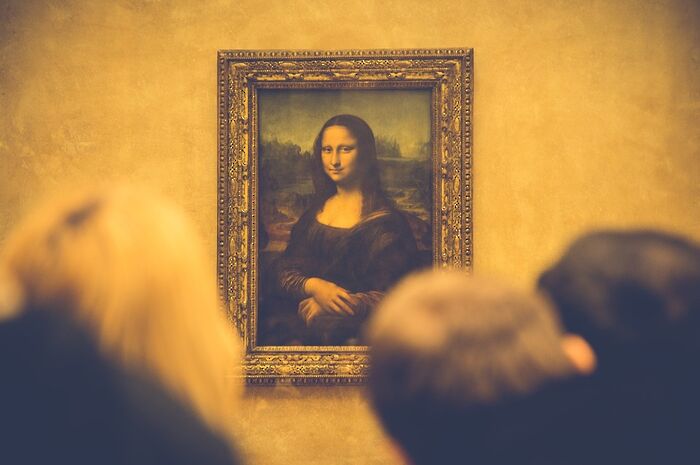Cheer Up Love review
Gabriel Humphreys visits the Beard Society’s striking showcase of the work of Damaris Athene, which challenges representations of women in art by swapping in male bodies

Following a winding route to Peterhouse’s newly opened Brewhouse, you could be excused for thinking you were in the wrong place, but the unassuming exterior belies the provocative and affecting ‘Cheer Up Love’ exhibition on display within.
Hosted by the Beard Society, Peterhouse College’s platform for feminist discussion, the installation showcases the work of Damaris Athene, a recent graduate from the Camberwell School of Art, and explores the writing of Bulgarian-French philosopher and critic Julia Kristeva, who wrote about the need for the female body to be restricted in order for it to be enjoyed.
These are figures to be enjoyed as neatly confined constructs, pressed into hypocritical identities and impossible physical situations
Each piece takes the form of an artwork of a female nude by male artists from the Western canon, and displaces the female figure with a male one. In addition, each exposed male body is adorned with phrases of street harassment, stitched to the canvases in pink ribbon, a brutal surgical attachment that cuts the two dimensional world of the paintings into our own three dimensional existence and blurs the lines between them. Whether drawing us into their world or thrusting themselves into ours, they never fail to be horrifying, violent and disturbing. These lewd and unsolicited commentaries also become the title of each work, only serving to alienate them further from their originals, named more gently, coyly or tenderly.

The rustic and authentic setting of the Brewhouse, with its creaking stairs, exposed beams and aged plaster walls, provides the artworks with a contextual contrast too. Paintings by acclaimed artists, pristine and prestiged, are usually displayed under glass in climate- and humidity-controlled wood-panelled museum rooms; here they are cast in a more a rough-and-ready environment, existing as touches of out-of-place refinement so as to make their statements all the more striking.
The disconnect between the originals and Athene’s versions is perfectly balanced: female nudes that are created to be sensual and provocatively exotic, and which are described so in critical discourse, become unpleasant and exploitative. The switch of sex of the nude subjects emphasises the inherent power dynamic within the paintings, the control of the artist over his objectified female model and the ever-present voyeurism of the male gaze within the artistic depiction itself.
Seeing my own gender portrayed in that way made me question how I consume visual culture
The eponymous work of the show, Cheer Up Love, takes Picasso’s Nude, Green Leaves and Bust as a shocking example. The pale and lifeless figure, laid out almost like a corpse, is merely an object in the still life composition, lying prostrate, robbed of any agency. Even the inanimate overlooking statue and the bizarrely leering and vibrant plant towering over the nude form seem to occupy a more active role.
Get In The Car, meanwhile, after Velázquez’s Rokeby Venus, uproots the very paragon of classical feminine sexuality, the goddess Venus, to serve the exhibition’s exposing purpose. As we are confronted with the near grotesque forcing of perspective and proportion in the image, the stark contrast of the sumptuous flowing cloth and the erotically-smoothed figure emphasise the fetishised virtue of chaste beauty. The piercing yet vacant gaze of the impossible reflection cuts through with an oddly voyeuristic and uncomfortable eroticism – these are figures to be enjoyed as neatly confined constructs, pressed into hypocritical identities and impossible physical situations.

This exhibition resonated with me, and I felt like I was deconstructing what I had seen for some time afterwards. My strength of feeling seemed to have been shared by others, evidenced by the visitors book at the entrance, where someone had commented “I am amused and completely baffled” while another wrote “I want more paintings of pained men!”
That is what really stays with me though, even days after I saw the collection for the first time. These depictions of nude men, in grotesque and profoundly uncomfortable compositions, appearing exposed, vulnerable, drugged even, shocked me in a way that female nudes never had. Seeing my own gender portrayed in that way made me question how I consume visual culture, my own male gaze, and how I critique the work of male artists.
In the introduction to the show, Athene asks the question “Can the male gaze be reclaimed?”, and while I don’t believe I’m in a position to even attempt to answer that, this exhibition is most certainly worthy food for thought and mindful contemplation.
 News / Uni Scout and Guide Club affirms trans inclusion 12 December 2025
News / Uni Scout and Guide Club affirms trans inclusion 12 December 2025 News / Pembroke to convert listed office building into accom9 December 2025
News / Pembroke to convert listed office building into accom9 December 2025 Features / Searching for community in queer Cambridge10 December 2025
Features / Searching for community in queer Cambridge10 December 2025 News / Uni redundancy consultation ‘falls short of legal duties’, unions say6 December 2025
News / Uni redundancy consultation ‘falls short of legal duties’, unions say6 December 2025 News / Gov declares £31m bus investment for Cambridge8 December 2025
News / Gov declares £31m bus investment for Cambridge8 December 2025










